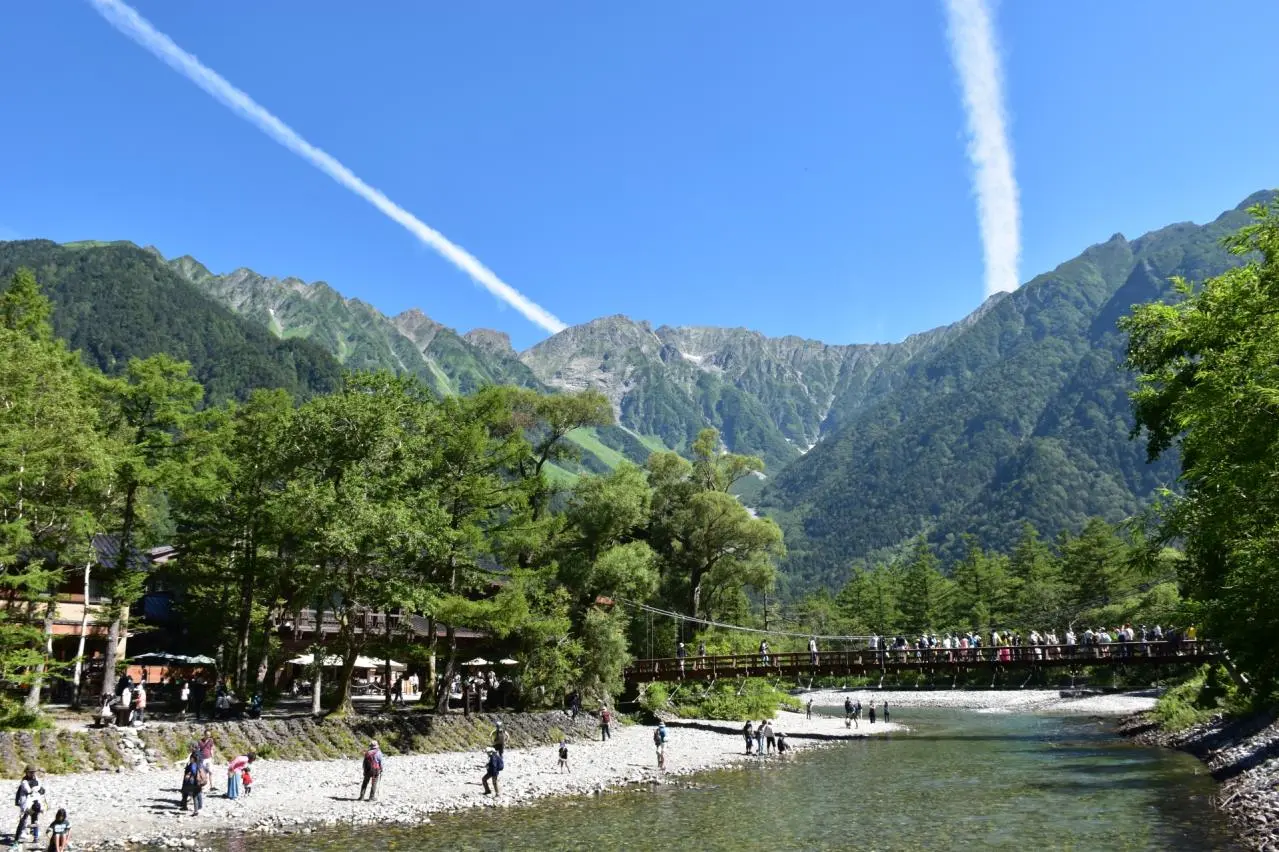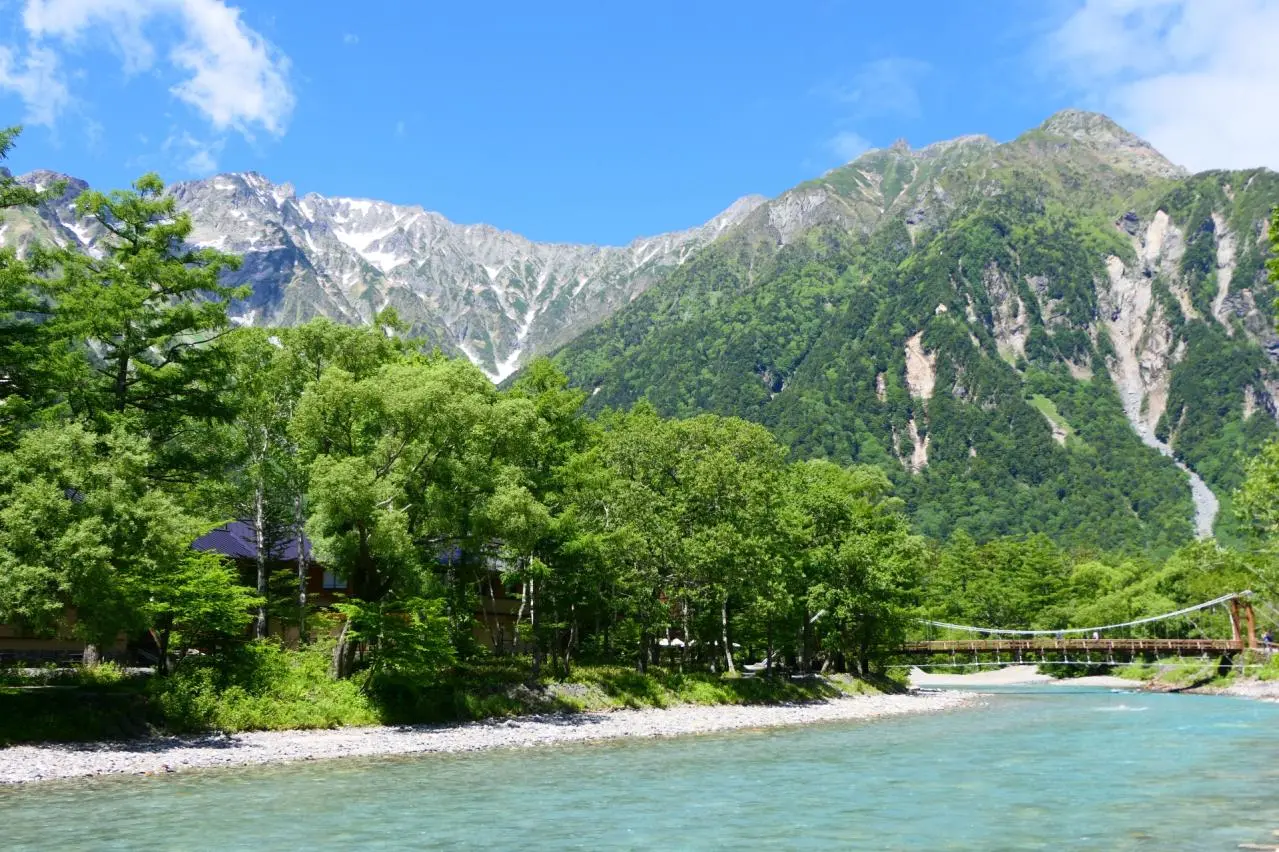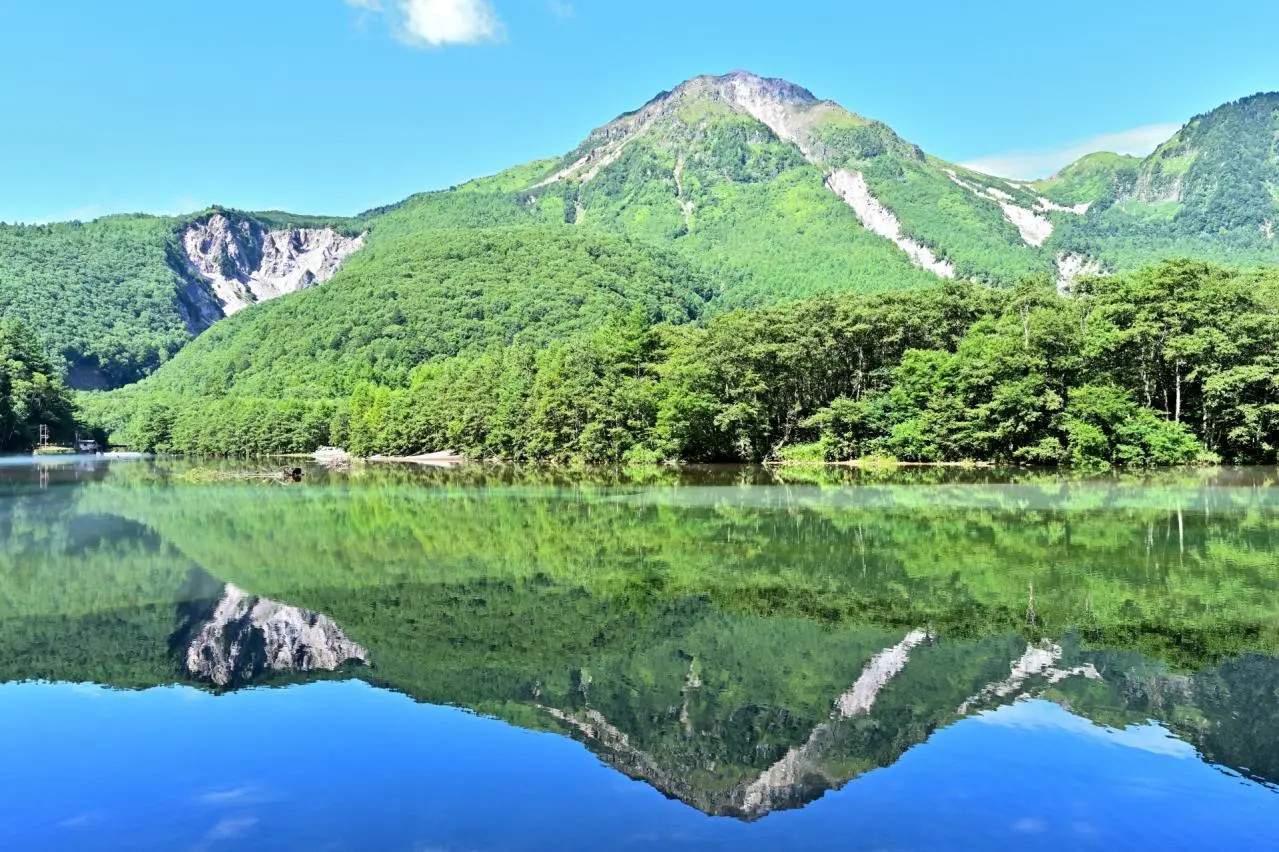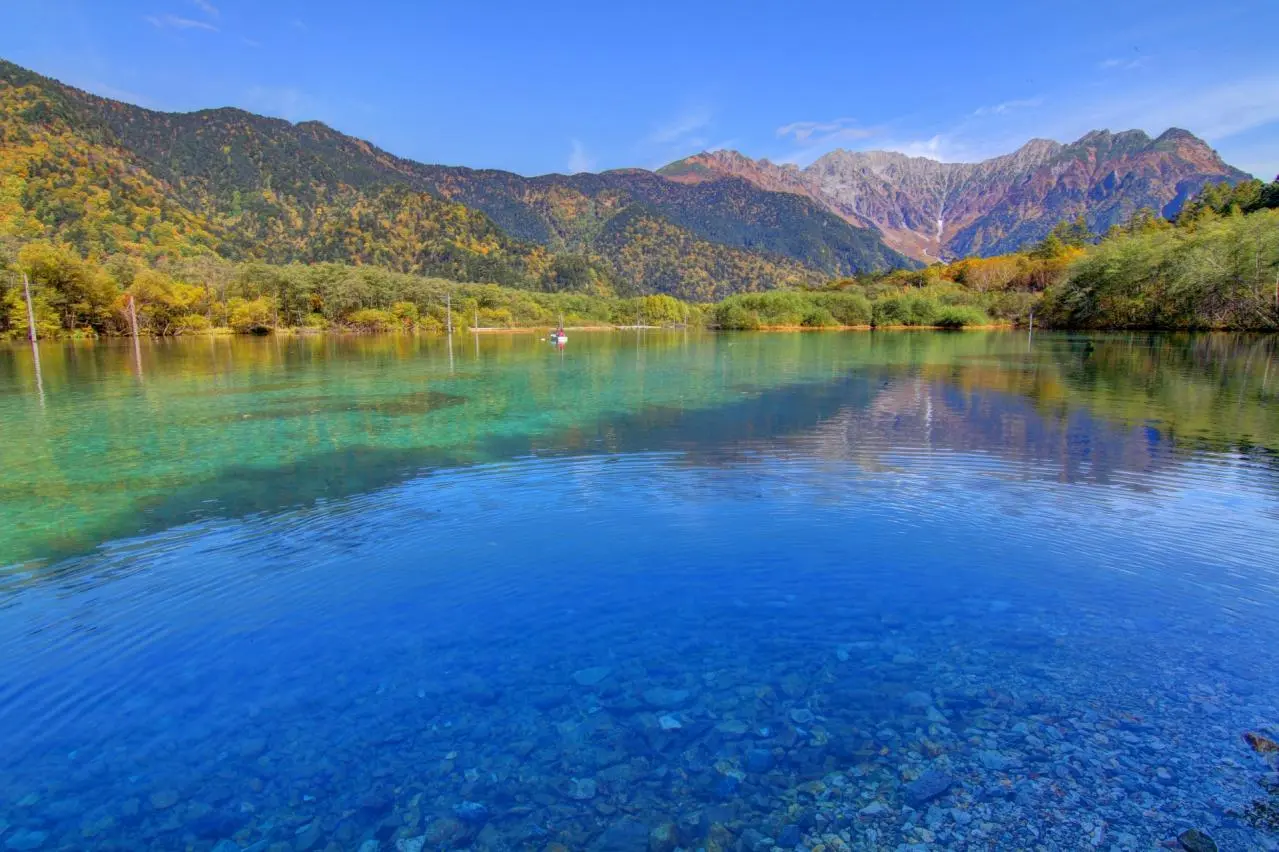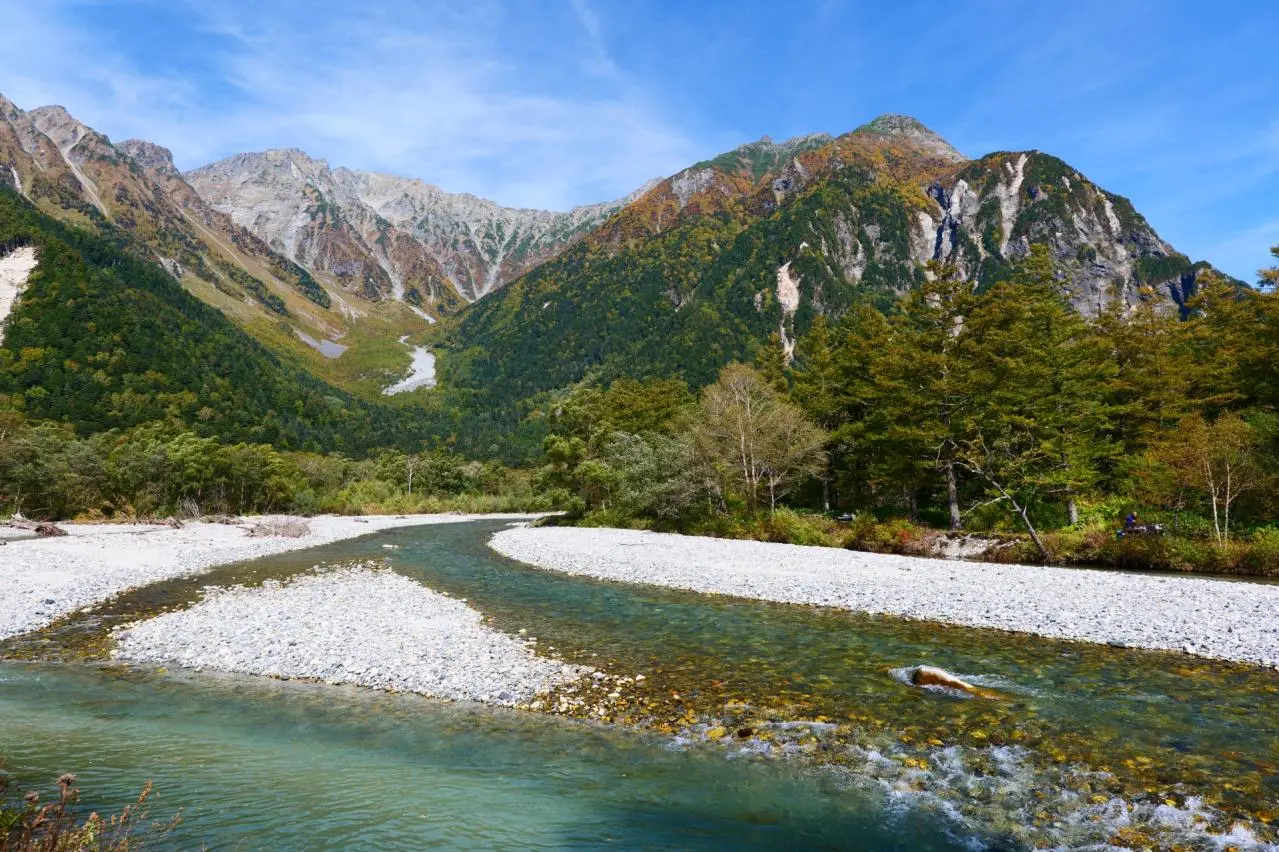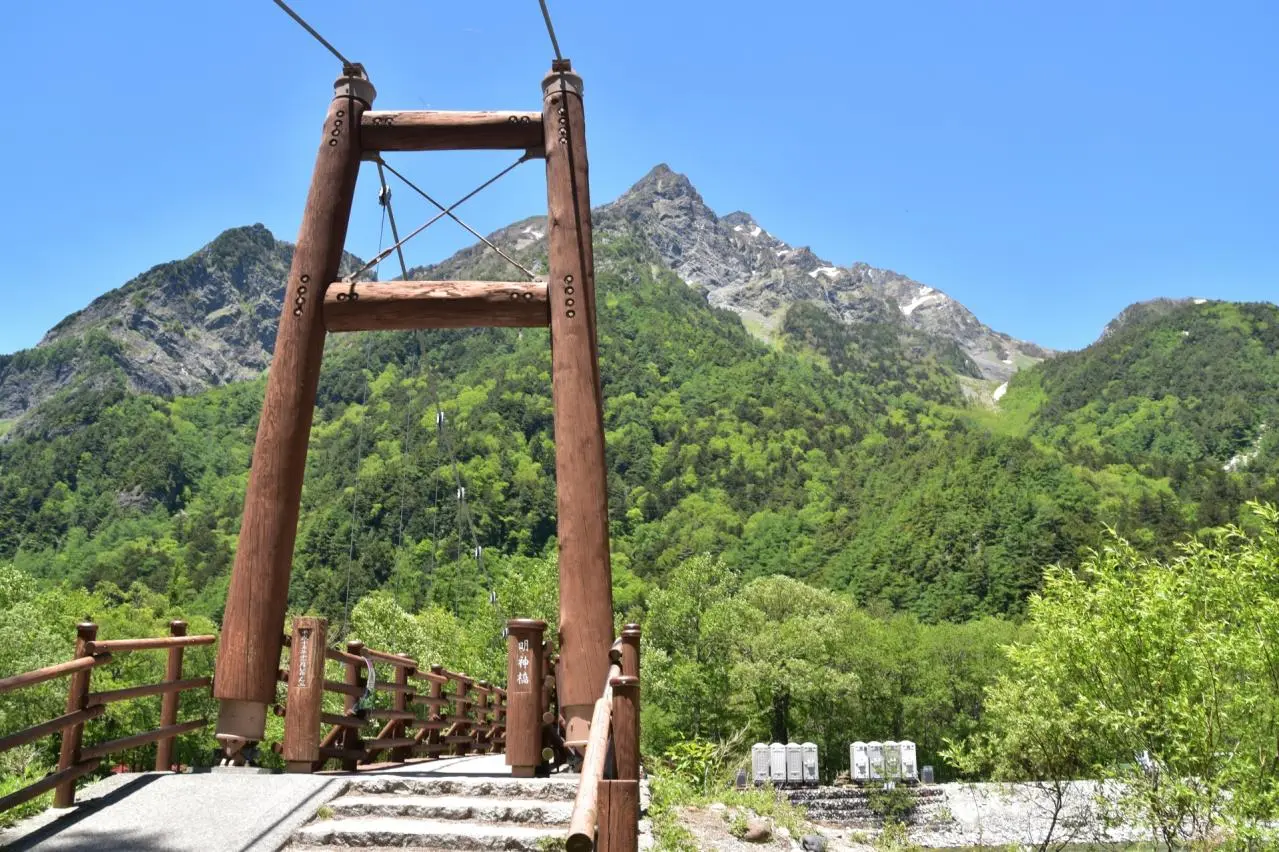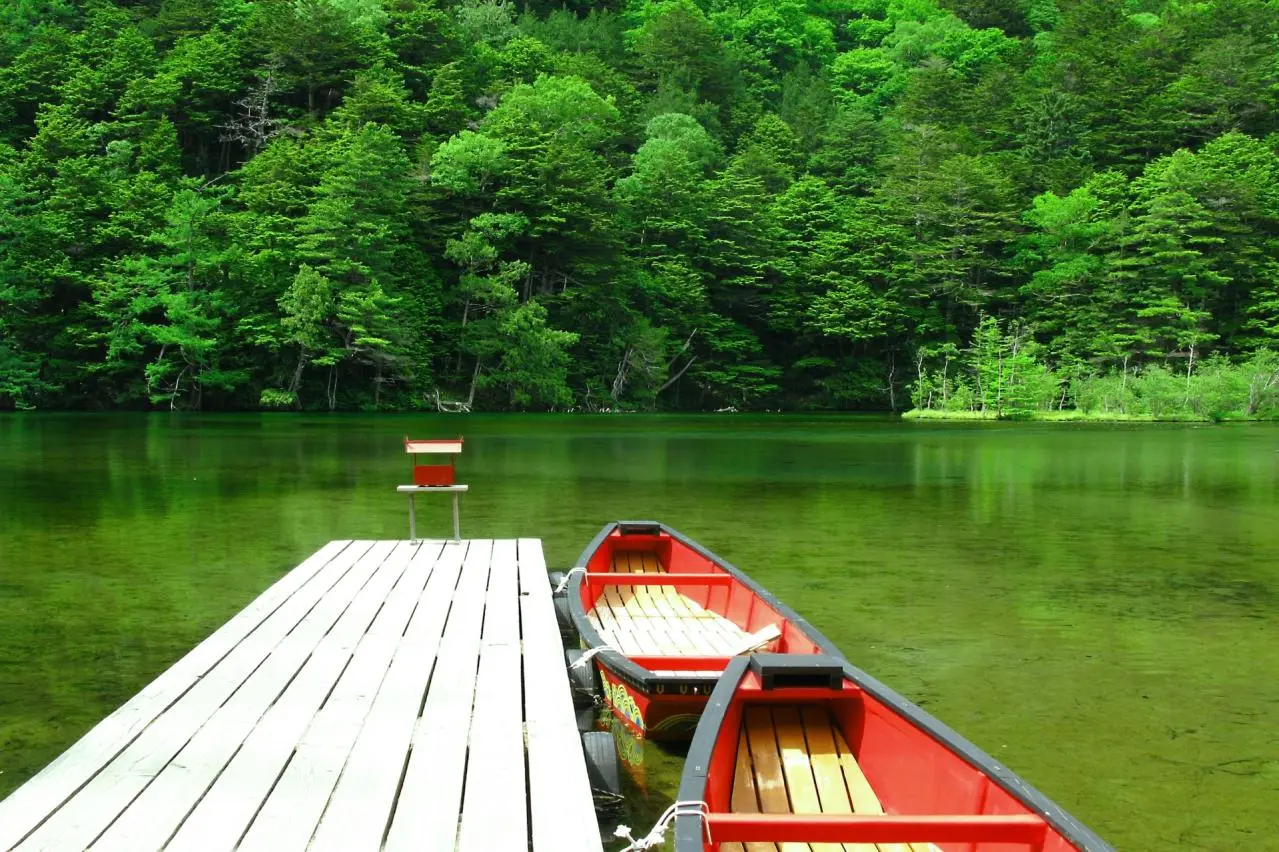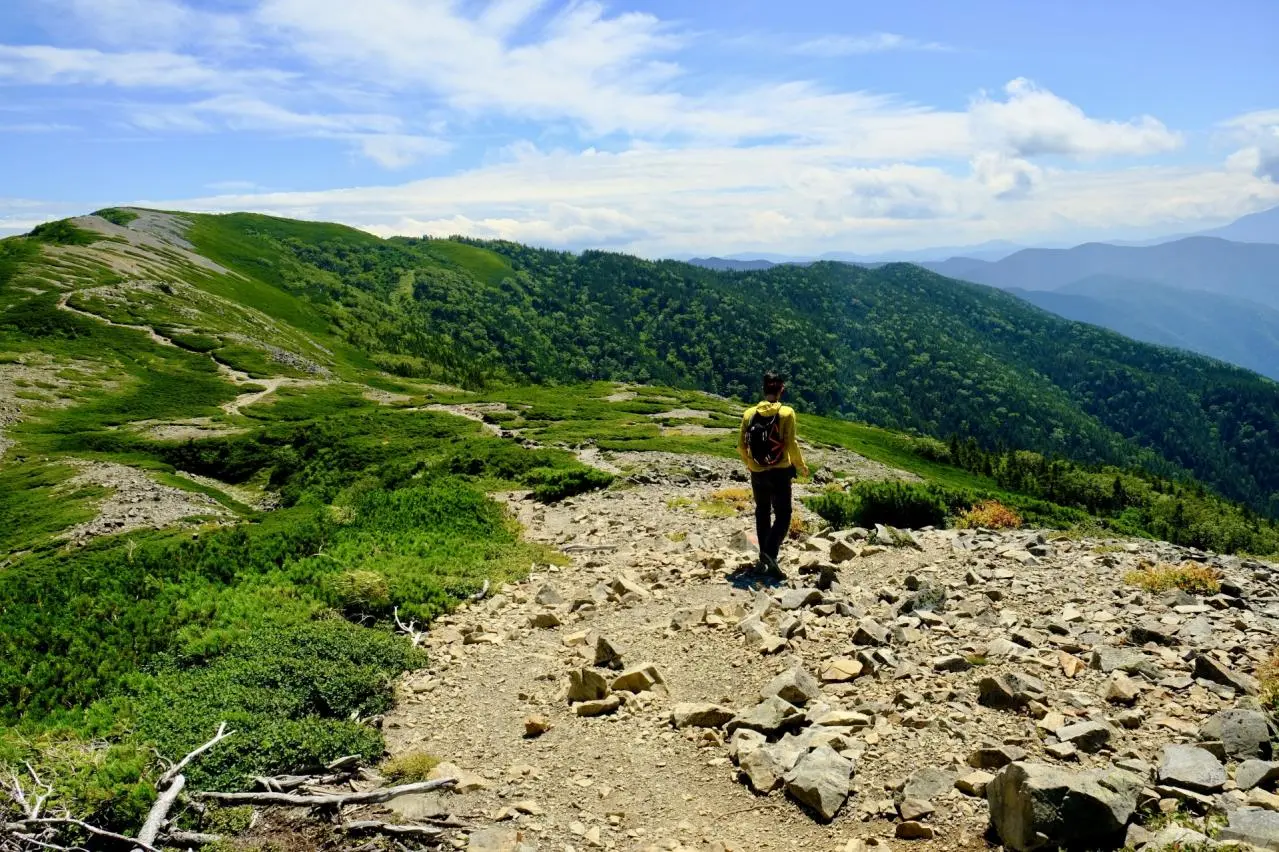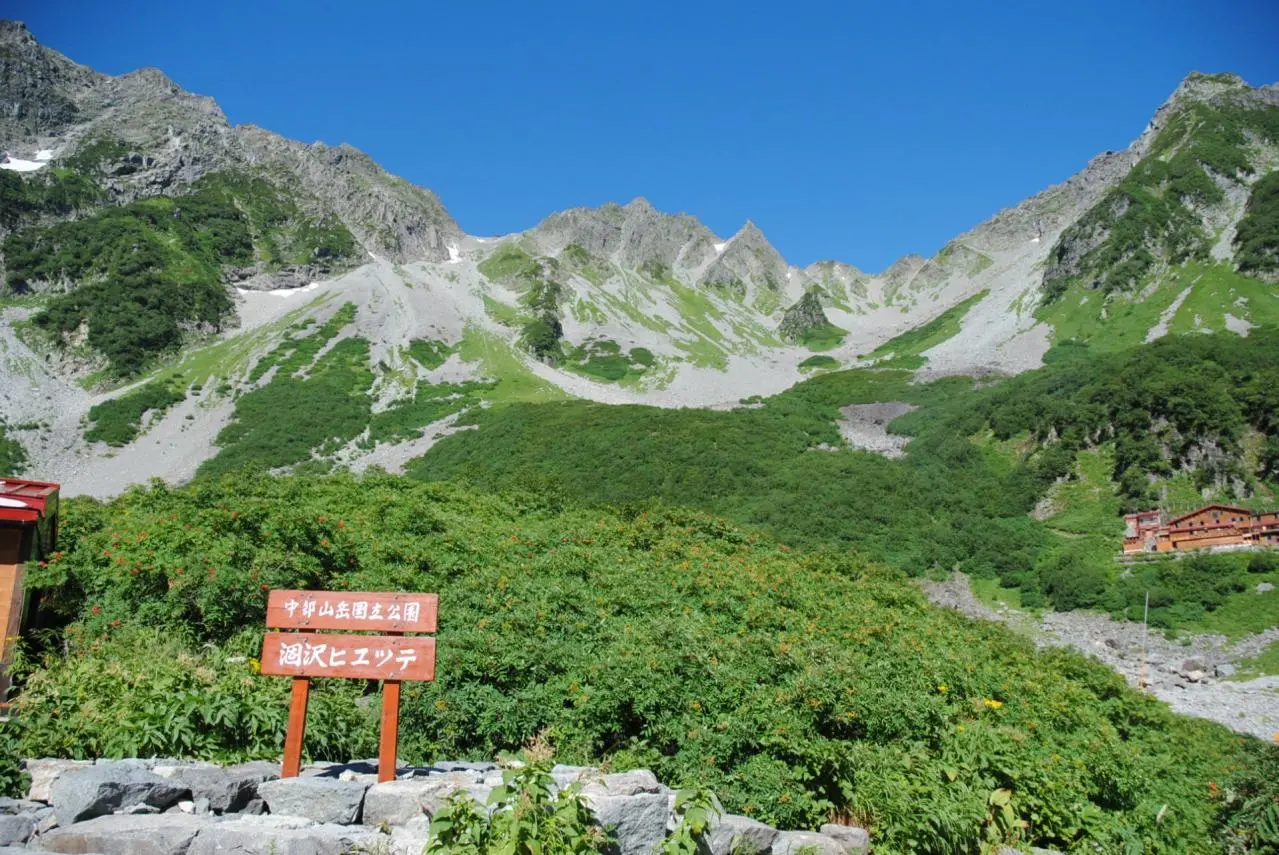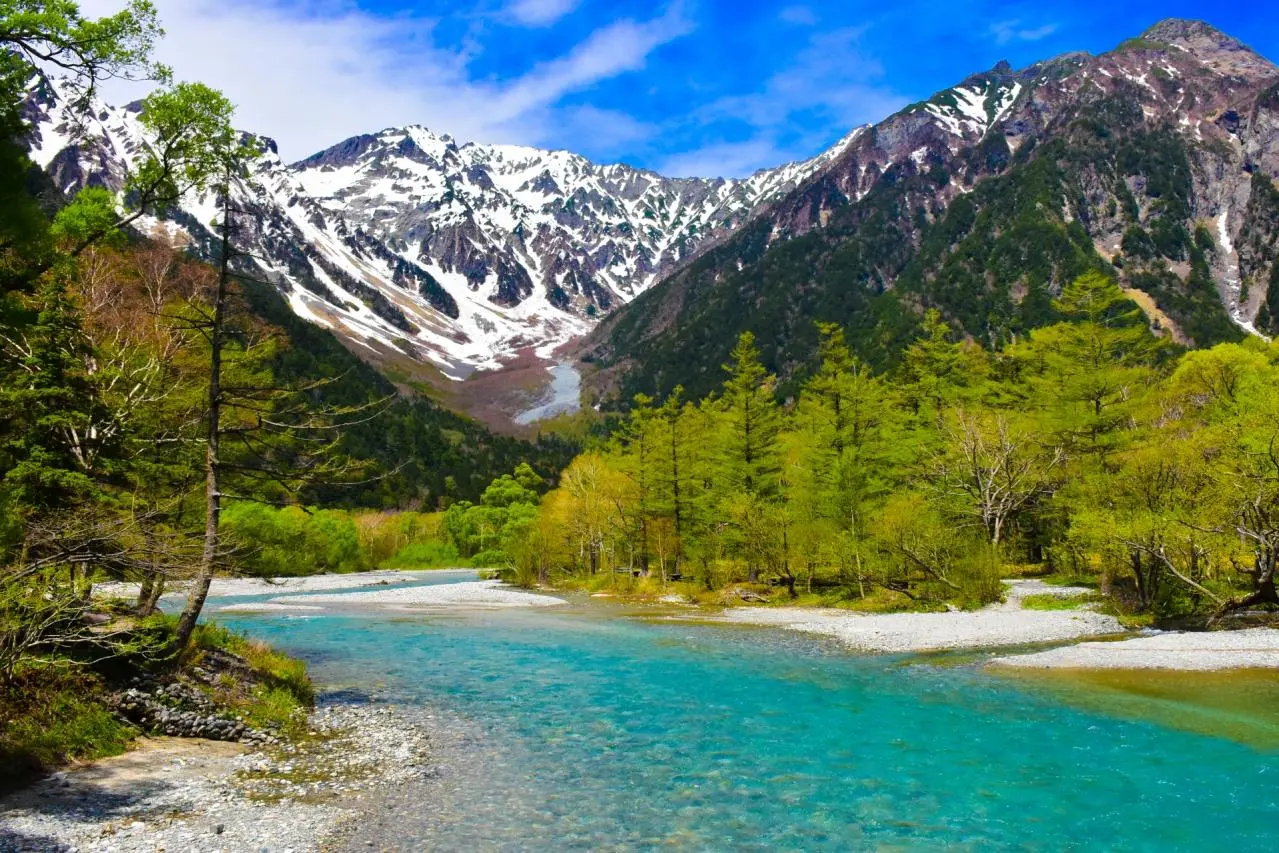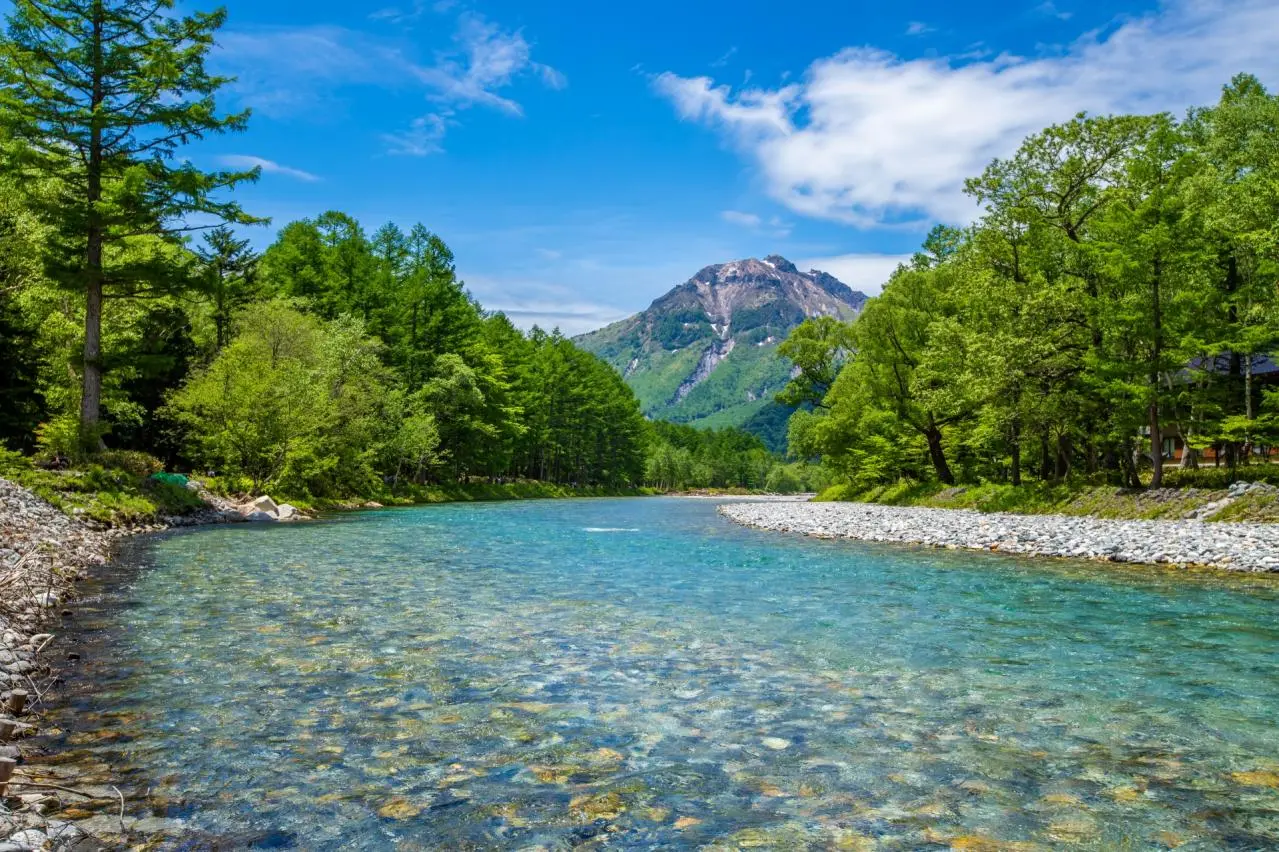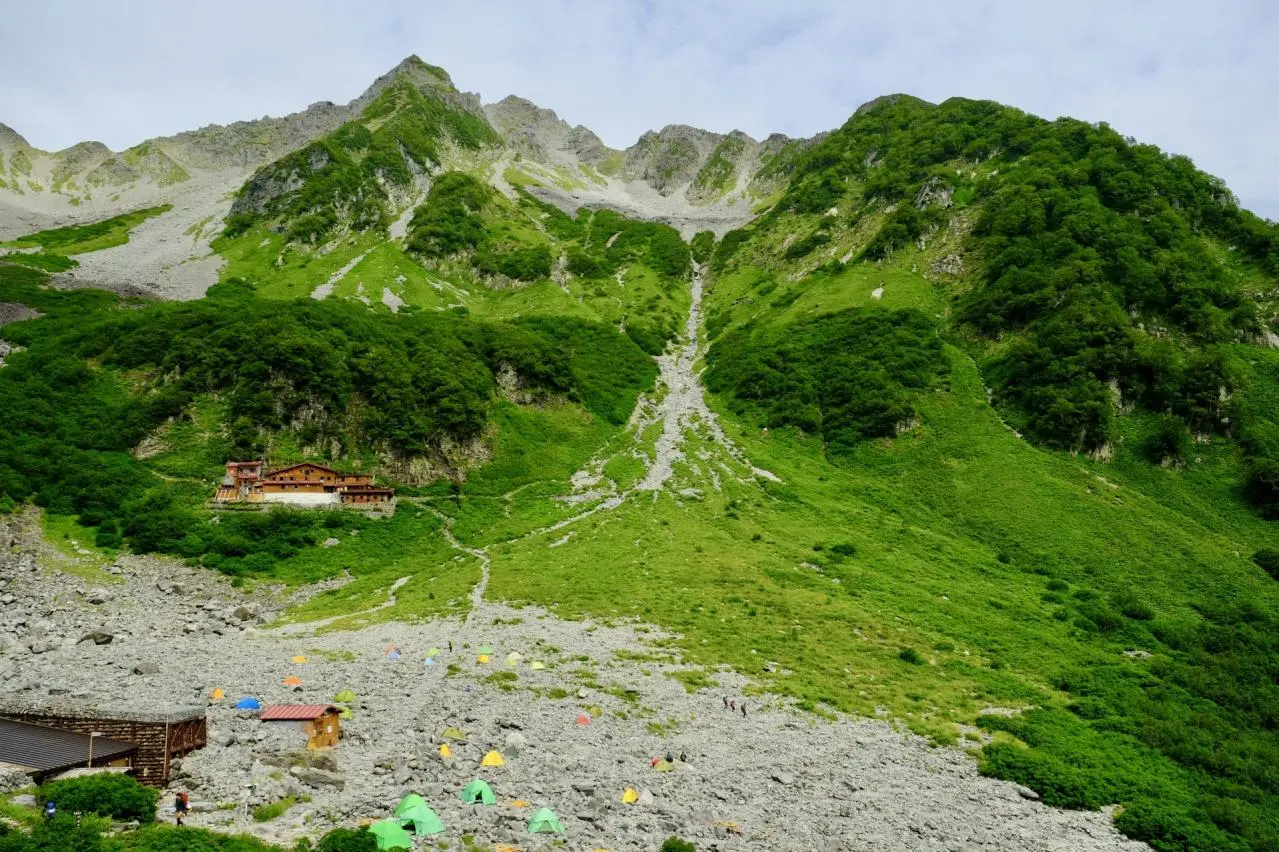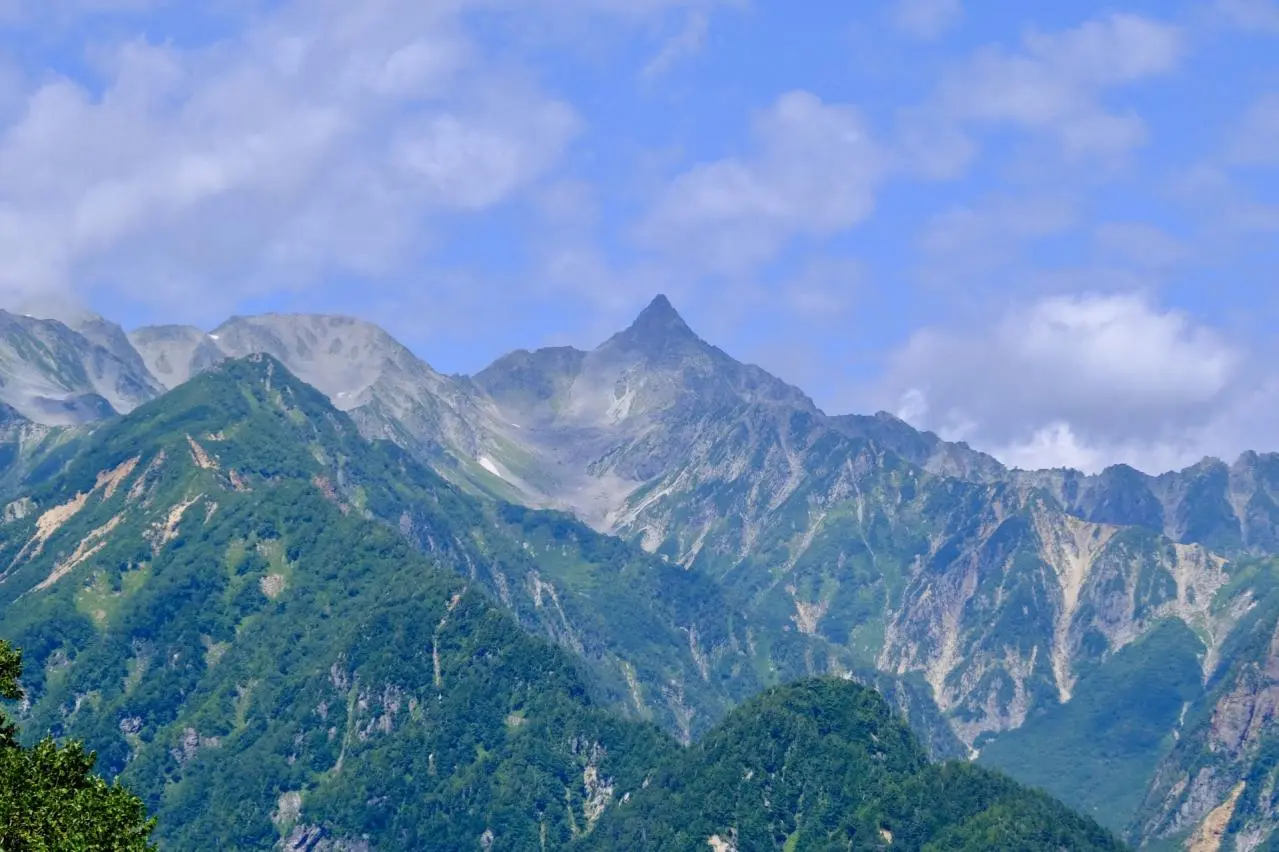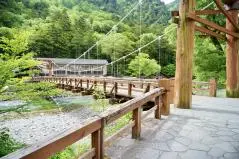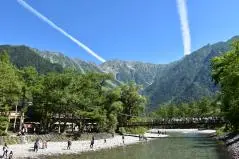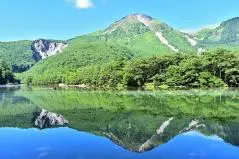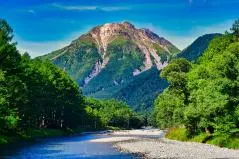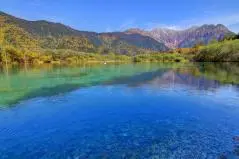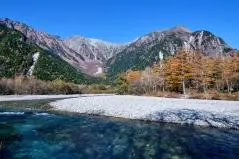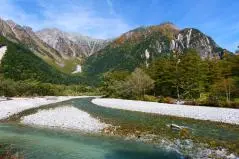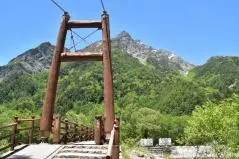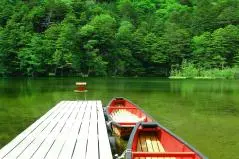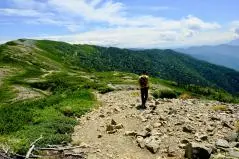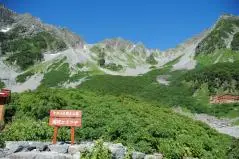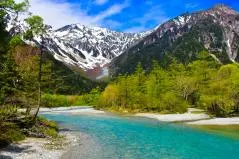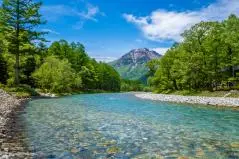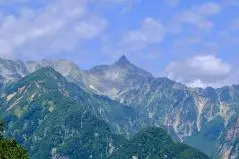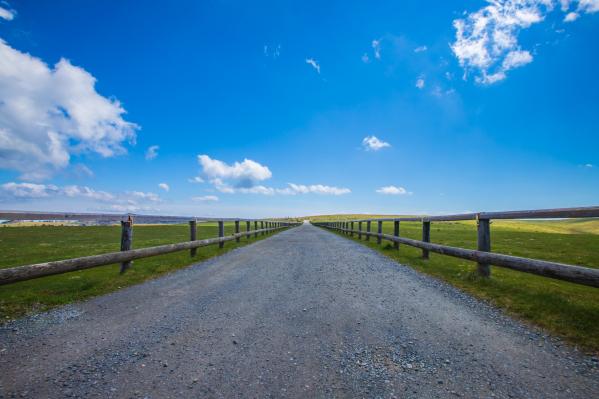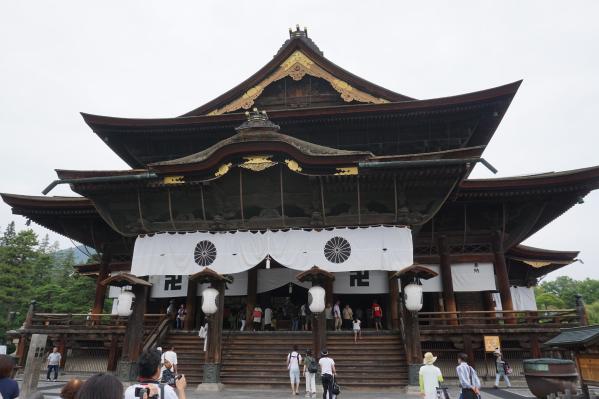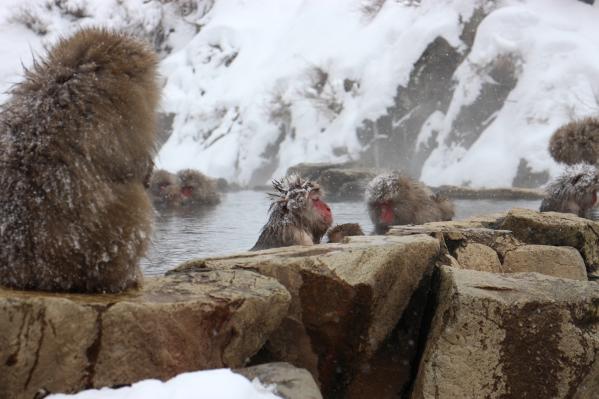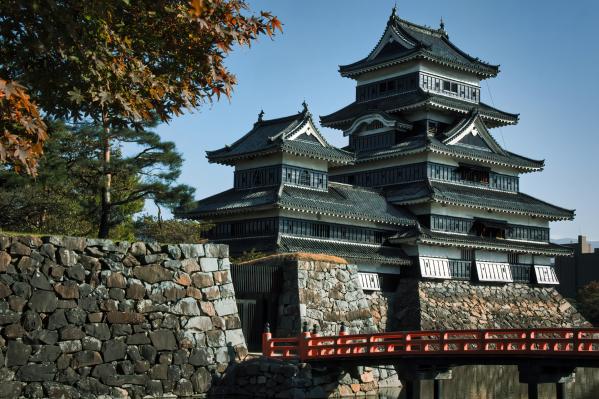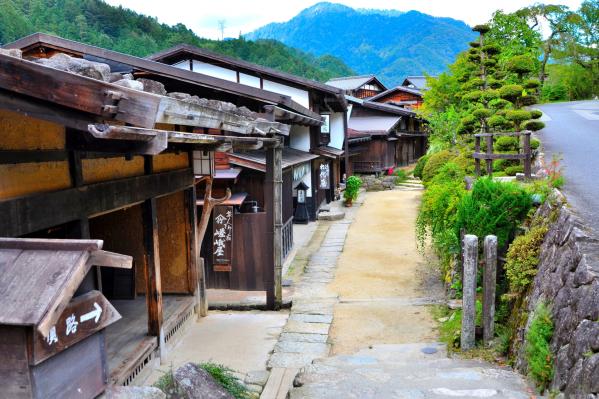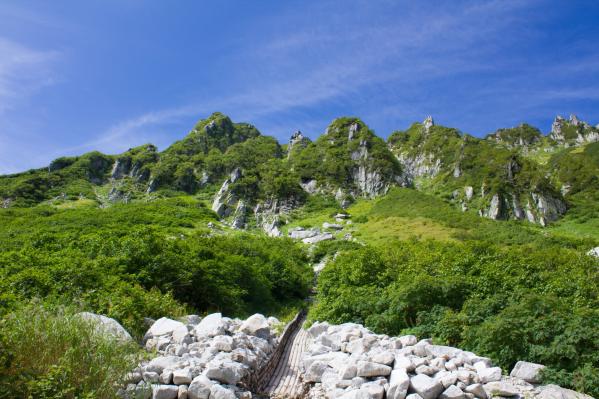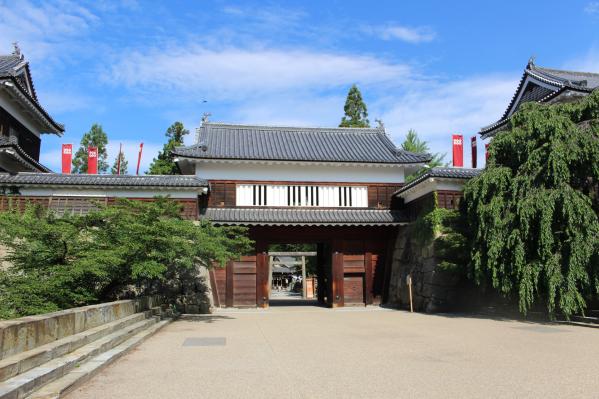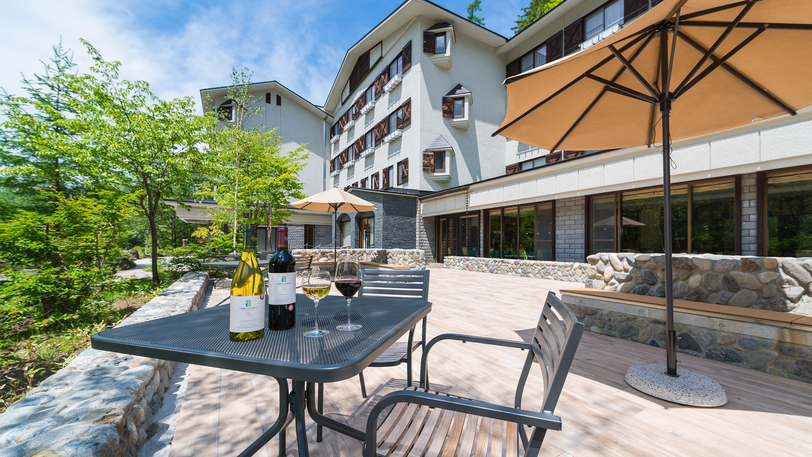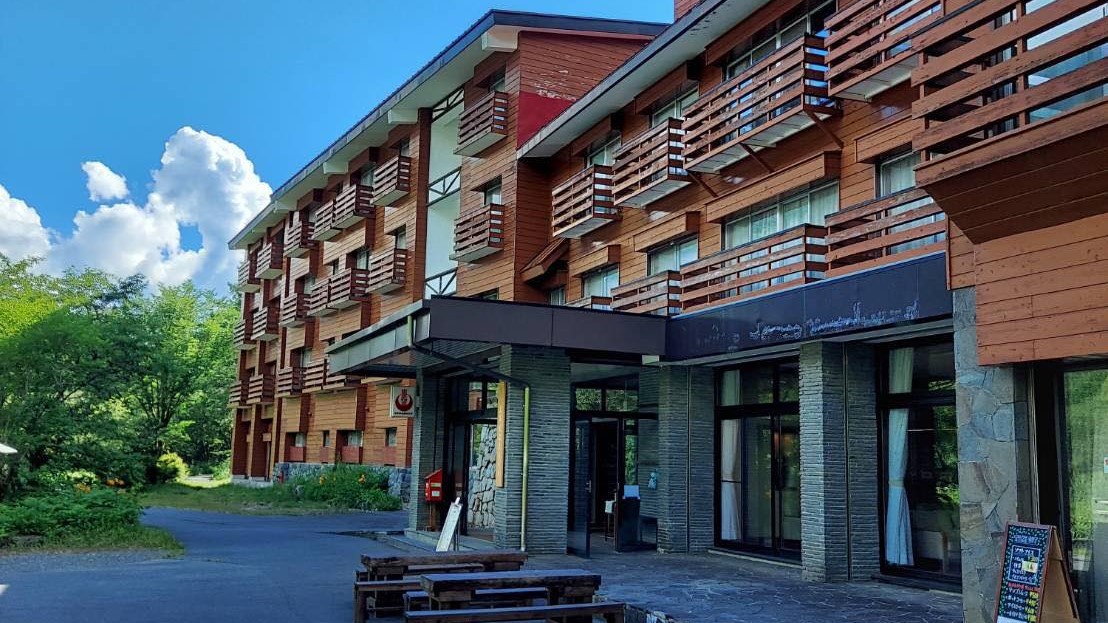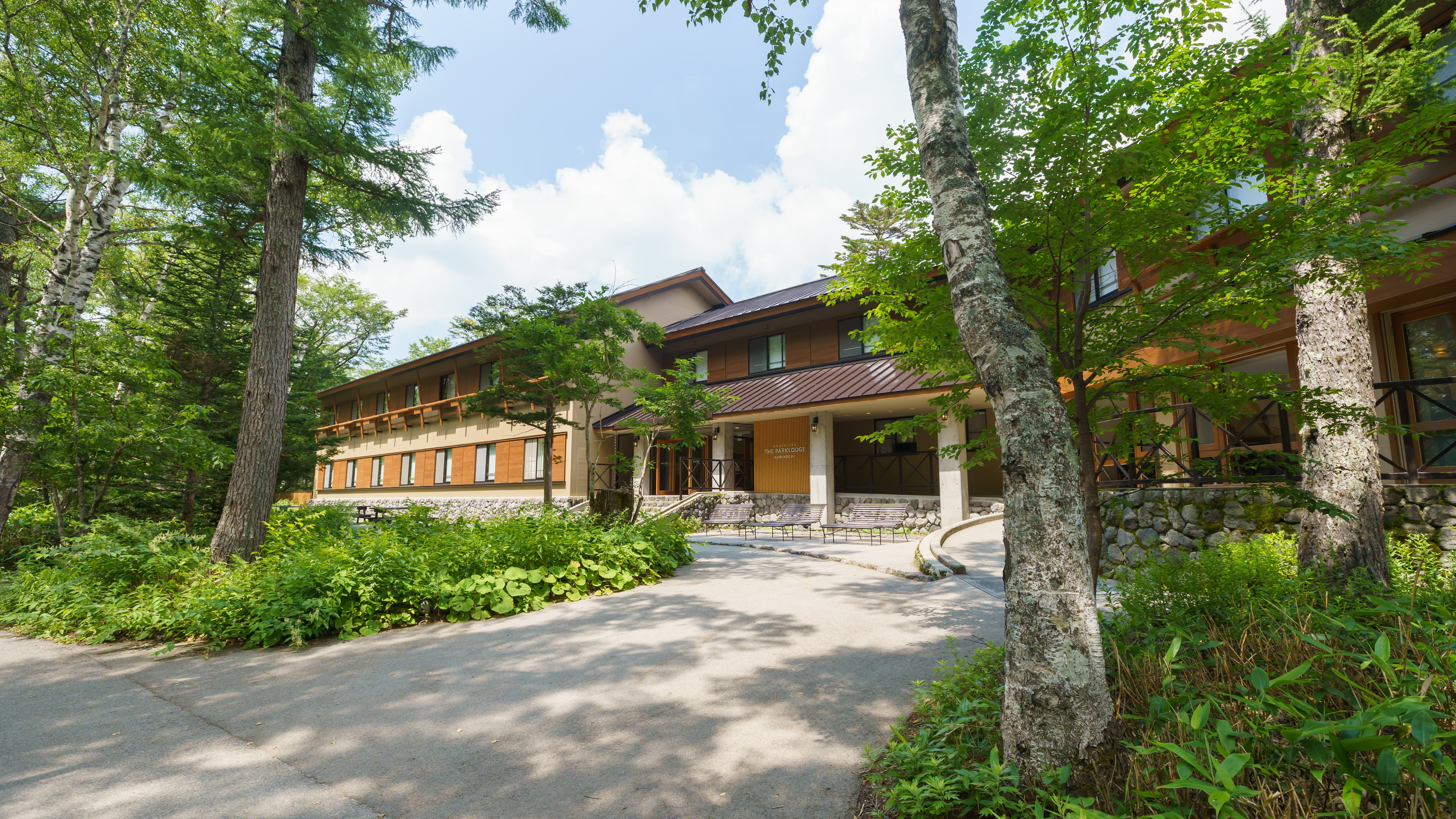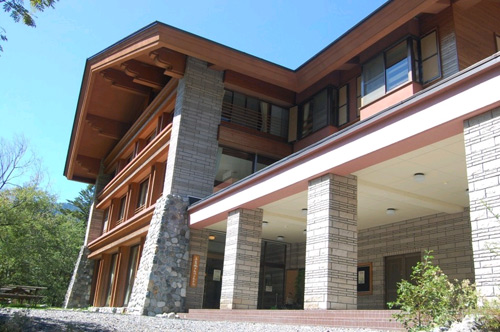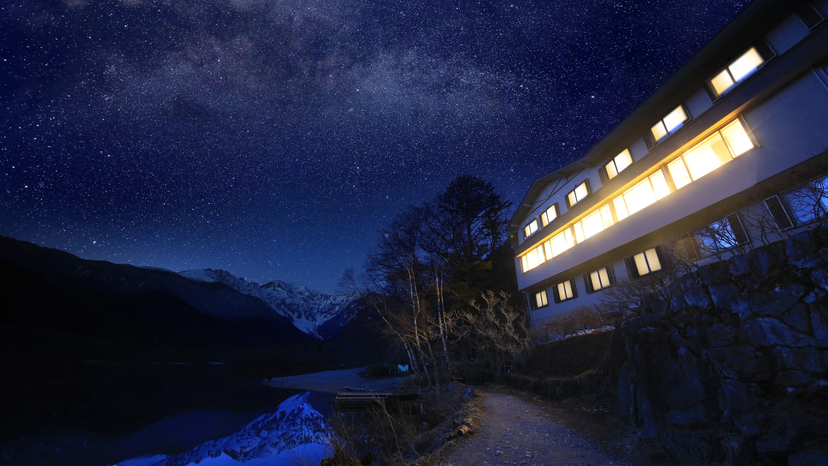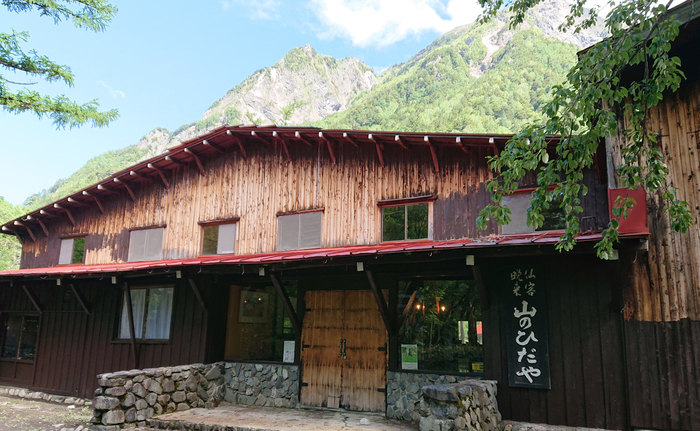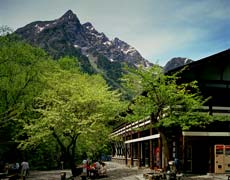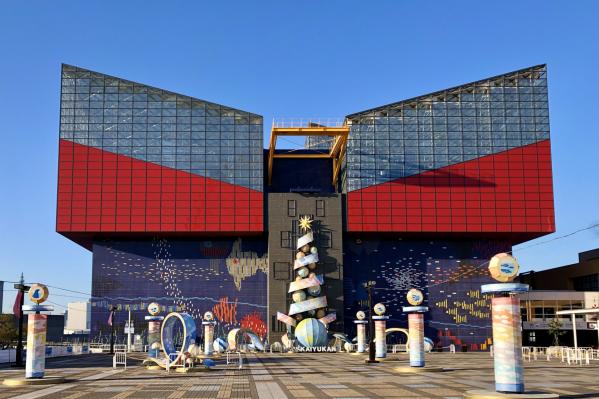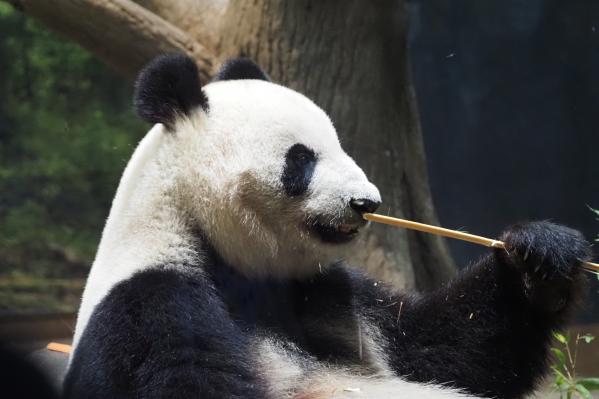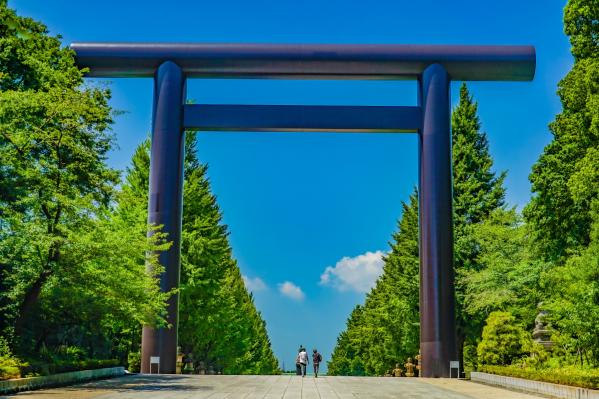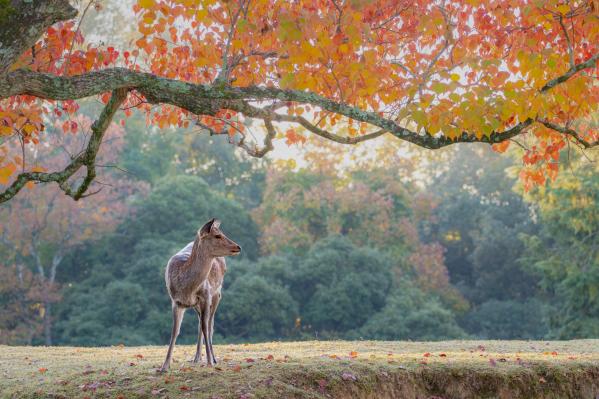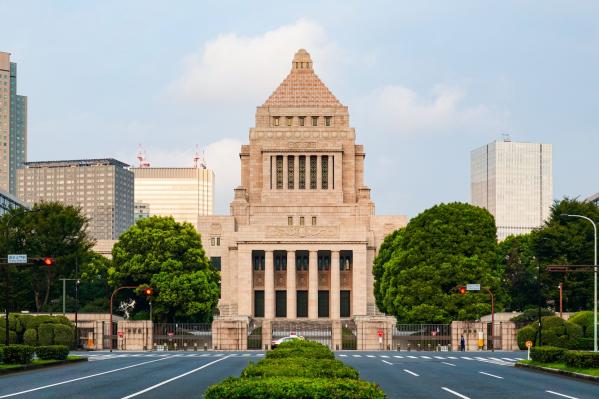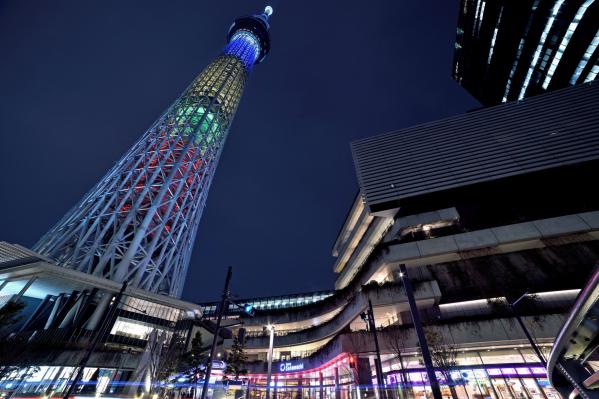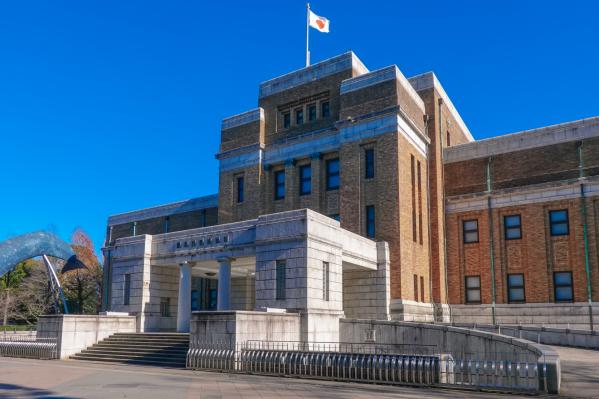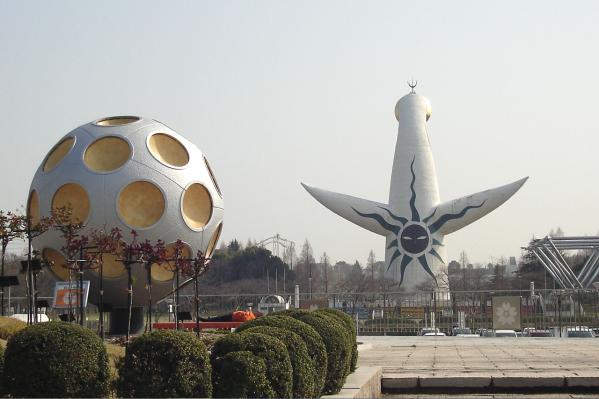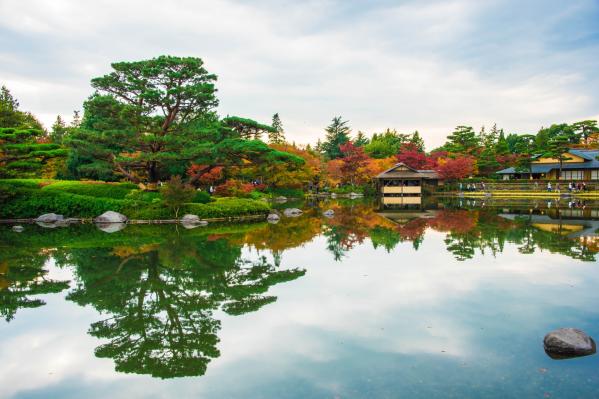Kamikochi
Access is about 90 minutes by bus from Takayama, via Hirayu Onsen, during which you can enjoy the magnificent scenery of the Northern Alps. Not only is it a tourist destination, but it is also beloved by outdoor enthusiasts for hiking and trekking opportunities. Kamikochi was introduced to the world by British missionary W. Weston, who is known as the "Father of Modern Mountaineering in Japan."
Each season has its own characteristics: spring offers fresh greenery, summer brings refreshing breezes, autumn showcases beautiful foliage, and winter presents a tranquil snowy landscape, making it a worthwhile destination to visit year-round. Why not visit Kamikochi to experience its diverse nature and history and find peace for your soul?
Basic Information
- Spot Name
- Kamikochi
- Location
- Azumi Kamikochi, Matsumoto City, Nagano Prefecture
- Access
- [Bus] Shuttle Bus "Kamikochi"
To preserve its beautiful and abundant nature, Kamikochi has a year-round private car restriction.
You will need to transfer to the "Kamikochi Shuttle Bus," which operates from the Sawando area on the Nagano Prefecture side and the Hirayu Onsen area on the Gifu Prefecture side. - Parking
- No parking available.
- Business Hours
- Varies by facility.
- Contact Information
- Phone Number: 0263-95-2433(上高地インフォメーションセンター)
- Official Website
Map
Detailed Information
▶Kappa Bridge: The Landmark of Kamikochi
Kappa Bridge is the symbolic landmark located at the center of Kamikochi. The current suspension bridge is the fifth generation, reconstructed in 1997, measuring approximately 36 meters in length and 3 meters in width. Although there are no records of when the first bridge was built, it is said that it used to be a drawbridge made of wooden materials from both riverbanks. It became a suspension bridge in 1910. The area around the bridge is one of the busiest spots in Kamikochi, filled with souvenir shops, restaurants, and hotels. Looking down from the bridge at the Azusa River in spring offers a view of the green of the Japanese willow, and in autumn, the colorful foliage reflects on the water's surface. When gazing upwards, the majestic Hotaka Mountain Range and Yake-dake can be seen.
▶The Mysterious Pond that Appears Suddenly: Taisho Pond
Just south of Kappa Bridge lies Taisho Pond, with its mirror-like surface reflecting the Hotaka Mountain Range and Yake-dake. The pond offers varying expressions throughout the day, including stunning views at dusk and early dawn. After rain, mist rises, creating a magical atmosphere. The area surrounding Taisho Pond is spaciously open, and at night, it becomes a stargazing spot enveloped in pitch darkness. On clear nights, the starry sky shines brilliantly, a sight that can only be enjoyed by those who stay overnight. In addition to the renowned Kamikochi Imperial Hotel, there are three campsites: Konashigahara, Tokuzawa, and Yokoo, allowing for various forms of travel.
Taisho Pond was formed in June 1915 during a massive eruption of Yake-dake, which blocked the Azusa River with a large amount of lava and mudflow. The submerged trees, which became standing dead wood, contribute to the pond's mysterious scenery. It is said that initially, the lake extended approximately to the area of Tashiro Bridge, which is about halfway between Kappa Bridge and the current Taisho Pond.
▶Feeling the Changing Seasons at Tashiro Pond and Tashiro Marsh
On the Kamikochi Nature Research Trail connecting Kappa Bridge and Taisho Pond, Tashiro Pond is surrounded by a larch forest, and clear spring water flows from the Fukukoyama and Rokukyu Mountains.
Beyond the primeval forest lies Tashiro Marsh, where the views of the Hotaka Mountain Range are stunning, frequently attracting photographers armed with tripods. Frost may settle soon after the climbing season opens, but as early summer approaches, fresh greenery shines, and orange rhododendrons bloom. After the height of summer, colors gradually change, wrapping the landscape in sepia tones by autumn. As November arrives, frost returns just before the closing of the climbing season, covering the scenery with a white sparkle.
▶Sacred Domain of the "Hodaka Shrine": Myojin Pond
Myojin Pond consists of the interconnected Ichin-no-ike and Ni-no-ike, shaped like a gourd, with the San-no-ike located near the walking path. The majestic Myojin-dake rises nearby, creating a breathtaking scenery.
At the edge of the pond resides the Okumiya of Hodaka Shrine, dedicated to the deity Hotaka-mi-no-mikoto, who is the guardian of the Japanese Alps and the protector of land and sea transportation. Pilgrims continuously visit to express their gratitude for the blessings of the mountain and pray for safe climbs. Every October 8, the Okumiya Grand Festival (Myojin Pond Boat Festival) is held, where priests dressed in Heian-period garments perform on two boats to the melodies of court music.
To thoroughly explore Kamikochi, it takes about five hours. First-time visitors are also recommended to walk with a professional guide.
▶Pioneers of Climbing Who Praised Kamikochi to the World
When reflecting on the history of Kamikochi, the names of Walter Weston and Kamonji Kamijo often come up. Weston, a British missionary, published "Climbing and Exploration in the Japanese Alps" in 1896, introducing and praising the areas of Kamikochi, the Hotaka Mountain Range, and Yari-ga-take. This led to a transformation of climbing in Japan—previously associated with faith, training, or livelihood—into a widely known leisure activity, bringing fame to Kamikochi. Due to these achievements, Weston is revered as the "Father of Modern Japanese Climbing." Weston was guided by local hunter Kamonji Kamijo, whose name is recorded in Weston's book as "Mr. Kamonji."
Sixty years prior to their time, the first person to climb the mountains around Kamikochi was the monk Barakuro from Toyama, who ascended Yari-ga-take. During this time, climbing was often associated with mountain faith, differing in nature from modern climbing. Barakuro frequently climbed Yari-ga-take with his followers. When the Meiji government sought modernization by hiring numerous foreign engineers, British metallurgical engineer William Galand climbed Yari-ga-take in July 1877 and introduced the term "Japan Alps" in a magazine, which became the origin of today's "Japanese Alps." The first ascent of the preceding Hodaka-dake by the Japanese climber Masao Udono with Kamonji marked the beginning of modern climbing in the region. In 1916, then-prince Higashikuni Yoshihisa underwent trail development for climbing from the islands through the Tokuboko Pass to Myojin to summit Yari-ga-take. Gradually, these actions led to the opening of mountain climbing to the public, and Kamikochi gained recognition as a tourist destination.
▶The Development Journey of Kamikochi as a Mountain Resort
Today, Kamikochi attracts about 1.2 million tourists annually as a mountain scenic spot. The reason is the abundant untouched nature, often called a treasure trove of the great outdoors. Nevertheless, its history as a resort destination is relatively short; it became more reachable to the general public only after the Showa era began.
Before the Meiji period, Kamikochi was primarily frequented by lumberjacks who were engaged in logging. After the Meiji era began, local figure Yoshijirou Kamijo from the islands received permission to start pasturing cattle and horses he collected around Matsumoto during the summer through the Tokuboko Pass to Kamikochi. This marked the beginning of Kamikochi Ranch, which was located at three sites: Konashigahara, Myojin, and Tokuzawa, with the Tokuzawa area commonly known as Tokuzawa Ranch. The picturesque scene of cows and horses grazing against the backdrop of residual snow in the mountains became a beloved pastoral image among visiting climbers.
In June of Taisho 4, Yake-dake erupted massively, causing a mudflow that blocked the Azusa River, resulting in the formation of Taisho Pond. In 1927, Kamikochi was featured as the setting for the novel "Kappa" by literary giant Ryunosuke Akutagawa, and it was prominently recommended in the "Eight Scenic Views of Japan" competition organized by Tokyo and Osaka newspapers. That same year, Prince Chichibu, the younger brother of Emperor Showa, ascended from Kamikochi to Okuhotaka-dake, and the discovery of Ke-shou-yanagi at the riverbed of Kamikochi became a significant topic during National Park selection preparation.
Subsequently, Kamikochi was designated as a national scenic beauty site and natural monument, and the first mountain resort hotel, the Kamikochi Imperial Hotel, was opened. It is said that materials were transported through the Kamaton Tunnel to Taisho Pond, where small boats were used to ferry materials to construct the hotel. These events paved the way for Kamikochi's development as a mountain resort.
The history of Kamikochi has also been one of pursuing coexistence and harmony between nature and humanity. During periods of tourism booms, concerns arose over the potential damage to the natural environment, leading to various initiatives.
The restriction on personal vehicles on the Kamikochi Park Road is one of the representative efforts aimed at minimizing the impact of exhaust emissions from automobiles to preserve the natural environment, ensuring that it remains a cherished place for many people.
Furthermore, the national park managing Kamikochi was established to promote natural protection and regional development, and efforts continue successfully. For instance, improvements have been made to climbing routes, mountain hut operations, and toilet facilities, creating a comfortable environment for visitors to Kamikochi.
Today, Kamikochi is a place where various initiatives have been taken to achieve coexistence and harmony between nature and humanity, continuing to be cherished by many.
▶A Landscape to Preserve for Future Generations and Children: Kamikochi
Kamikochi is home to unique landscapes that can only be seen there. The consciousness of nature conservation at Kamikochi has been rooted for more than 100 years.
The first initiative for nature protection at Kamikochi began in 1909 (Meiji 42). Prohibitions on gathering alpine plants were already in place, and simultaneously, from 1915 (Taisho 4) for around a decade, larix trees were planted around the Kamikochi Bus Terminal and Konashigahara area.
Various species such as the Japanese rock ptarmigan, Japanese serow, and iwana trout have been designated as natural monuments and are prohibited from being caught. The entire Kamikochi area has also been designated as a natural monument and national park. Many local residents established the "Kamikochi Beautification Society" in 1963 (Showa 38) to aim for a beautiful Kamikochi free of trash, actively engaging in roadside litter collection activities every day.
We must pass on Kamikochi's nature to the next generation. It’s crucial to inherit such invaluable, irreplaceable treasures of nature for our children. This is each of our missions. With the affection of every visitor, let’s protect Kamikochi.
▶Kamikochi: A Unique Destination with Two Distinctions
Kurobe Gorge and Kamikochi are among the most beautiful landscapes in Japan, designated as "Special Scenic Beauty" and "Special Natural Monuments" to preserve their natural environment and cultural values. This designation is part of a system established by the government to protect the natural and cultural aspects of regions, based on the Cultural Properties Protection Law. Areas designated can be freely accessed by general tourists, but there may be restrictions and regulations in place to ensure their protection.
Kamikochi Movies
Nagano Tourist Attractions
View ListTogakushi Shrine
The highly popular power spot "Togakushi Shrine" consists of five historic shrines: Okusha, Nakasha, Hobokusha, Kuzuryu Shrine, and Hi no Mikokami Shrine. Togakushi ...
Utsukushigahara
Utsukushigahara Plateau is an expansive highland that stretches approximately 2,000 meters above sea level and is located in Matsumoto City, Nagano Prefecture. Durin...
Jigokudani Yaenkoen
Jigokudani Monkey Park is located in the northern part of Nagano Prefecture within the Joshinetsu Kogen National Park, at an elevation of 850 meters in a harsh envir...
Matsumoto Castle
Matsumoto Castle is one of Japan's five great castles and is designated as a national treasure, a gem of historical architecture. Alongside Himeji Castle, Hikone Cas...
Tsumagoshuku
Tsumago-juku is a post town located in Nagano Prefecture along the Nakasendo, and it is the 42nd of the 69 stations connecting Edo and Kyoto. With Ise Mountain to th...
Senjōji Kōdō
Senjojiki Cirque is a bowl-shaped landform formed by glacial erosion, located at Komagatake in the Central Alps. From the "Senjojiki" station at an elevation of 2,61...
Ueda Castle
Ueda Castle, located in Ueda City, Nagano Prefecture, is a historic castle built by Sanada Masayuki. It gained fame for repelling the Tokugawa forces during the Firs...


